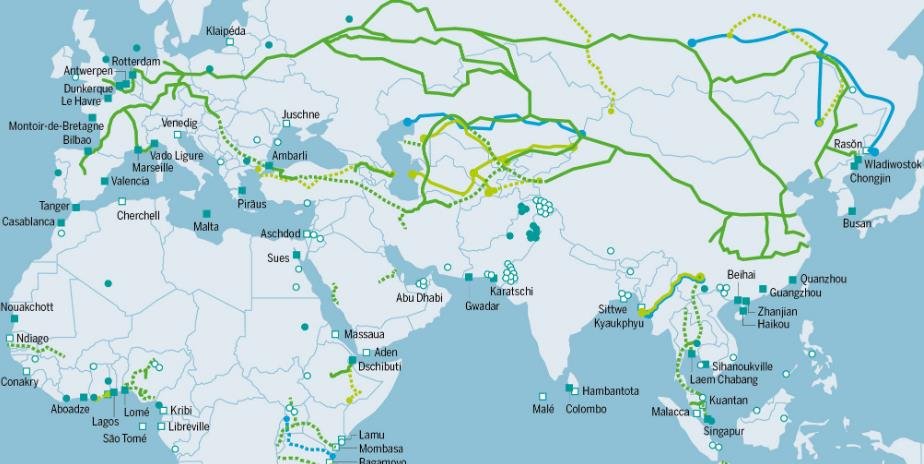China is hosting its third Belt and Road Initiative (BRI) Forum in Beijing this week, celebrating 10 years of its signature foreign policy project that aims to boost connectivity and trade across the world. The BRI has been hailed by Chinese President Xi Jinping as a “project of the century” that has brought benefits to 152 countries through investments and infrastructure projects. However, the BRI has also faced challenges and criticisms, such as debt distress, environmental impact, and geopolitical rivalry.
What is the BRI?
The BRI was launched by Xi in 2013 as a program for Chinese companies to build transportation, energy, and other infrastructure overseas funded by Chinese development bank loans. The stated goal was to grow trade and the economy by improving China’s connections with the rest of the world in a 21st-century version of the Silk Road trading routes from China to the Middle East and Europe.
The BRI consists of two components: the “belt”, which refers to overland routes connecting China to Europe through Central Asia, as well as to South Asia and Southeast Asia; and the “road”, which denotes a maritime network linking China to major ports through Asia to Africa and Europe.
According to the Chinese government, more than 3,000 projects totaling nearly $1 trillion have been launched in BRI countries in the past decade. China has also become a major financer of development projects under the BRI, on par with the World Bank.

What are the achievements?
The BRI has funded infrastructure and energy projects across the developing world, such as power plants in Pakistan and Indonesia, railways in Kenya and Laos, and ports in Sri Lanka and West Africa. These projects have helped improve access to electricity, transportation, and communication for millions of people.
The BRI has also boosted trade and economic cooperation between China and its partners. About $19.1 trillion of goods were traded between China and BRI countries in the past decade. China has also signed free trade agreements with 19 BRI countries, covering more than a third of global GDP.
The BRI has also deepened China’s relations with Africa, Asia, Latin America, and the Middle East. It has increased China’s diplomatic influence and soft power in these regions, as well as its role in global governance. China has initiated or joined several multilateral platforms under the BRI framework, such as the Asian Infrastructure Investment Bank (AIIB), the New Development Bank (NDB), and the Silk Road Fund.
What are the challenges?
The BRI has also faced challenges and criticisms from various quarters. One of the main concerns is debt sustainability. Many of the recipient countries of Chinese loans are low-income or developing countries with weak fiscal capacity and high debt levels. Some of them have struggled to repay their debts amid global economic headwinds from the Covid-19 pandemic and other factors.
A report published this month by Boston University found that “accentuated debt distress” can be evidenced in many of the recipients of Chinese finance, “with several countries owing China a significant share of their external debt”. The report also warned that China’s lending practices lack transparency and accountability, and may undermine international norms and standards.
Another concern is environmental impact. Many of the BRI projects involve large-scale construction or extraction of natural resources that may cause pollution, deforestation, biodiversity loss, or greenhouse gas emissions. Some of these projects have also faced opposition or protests from local communities over their social or cultural implications.
A third concern is geopolitical rivalry. The BRI has been viewed with suspicion or hostility by some countries, especially in the West, that see it as a tool for China to extend its global influence at the expense of their interests or values. The United States, for instance, has accused China of pursuing a “predatory” approach that undermines sovereignty, security, and stability in regions such as Asia-Pacific, Africa, and Europe. The US has also proposed its own investment program to counter China’s BRI.
What is the way forward?
In his opening speech at the BRI Forum on Wednesday, Xi Jinping defended his initiative as a “win-win” proposition that promotes peace, development, cooperation, and mutual benefit. He also pledged to make the BRI more green, transparent, inclusive, sustainable, and people-centered.
Xi said China will work with its partners to uphold high-quality standards in building the BRI projects, follow international rules and best practices in financing and procurement, and enhance debt management and risk prevention. He also said China will support green and low-carbon development, strengthen cooperation on climate change and biodiversity, and promote the harmonious coexistence of humans and nature.
Xi also called for more dialogue and consultation among the BRI countries, as well as with other stakeholders, to foster mutual trust and understanding. He said China will uphold the principles of extensive consultation, joint contribution, and shared benefits in advancing the BRI. He also said China will respect the sovereignty, independence, and territorial integrity of each country, and uphold the diversity of civilizations and the common values of humanity.
Xi also stressed that the BRI is not a geopolitical tool or a zero-sum game, but a platform for cooperation and mutual benefit. He said China will work with other countries to safeguard multilateralism, uphold the international order, and promote world peace and stability.
